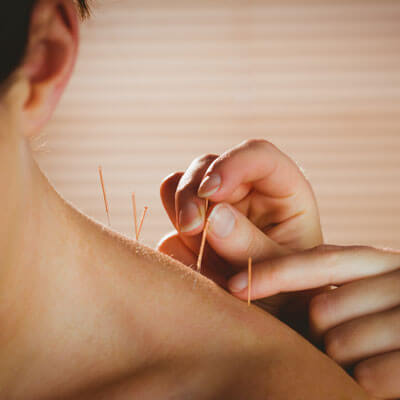 You’ve likely heard of dry needling. Available at Effortless Superhuman, we have found this natural therapy to be incredibly beneficial for both chronic and acute problems. Below, you can learn more about how dry needling can help to alleviate your unwanted symptoms and movement dysfunctions.
You’ve likely heard of dry needling. Available at Effortless Superhuman, we have found this natural therapy to be incredibly beneficial for both chronic and acute problems. Below, you can learn more about how dry needling can help to alleviate your unwanted symptoms and movement dysfunctions.
The Trouble with Trigger Points
When you have dry needling done, thin needles are inserted into tight areas of muscle and fascia. These areas, called trigger points, are usually sore to the touch. Your trigger points can cause you pain, weakness, pins and needles, paresthesia, and a restriction in range of motion around your joints.
A trigger point can be caused by an array of different factors, such as
- Muscle dysfunction or overload
- Stress
- Caffeine
- Lack of sleep
- Excessive exercise or training
- Nutrient deficiencies
If you have a trigger point, you may think of them as a knot or adhesion. Though it goes by different names, the feeling is the same: a tough area in your muscle that doesn’t seem to go away, no matter what you may try in addressing it. You may have a trigger point that is chronic or acute: that is, it may have been present for years, even decades, or it may have developed more recently.
No matter what the cause of your trigger point is or how long it’s been present, dry needling can provide fast, effective relief from unwanted symptoms.
Who Should Get Dry Needling?
Have you had a massage but felt like it didn’t quite reach your problem area? If so, dry needling may be perfect for you. You’ll find that your relief is far more immediate with dry needling than it is with a deep tissue massage. And it’s ideal for athletes who have large areas of muscle.
Pain Generator = The tissues or structures within your body causing the pain.
Another advantage of dry needling is that the recovery period is much shorter than it is for a deep tissue, sports-style massage. I’m sure you have experienced the ‘after-effects’ of a deep tissue massage. Tightness and soreness that can go on for days and keep you out of action. In some instances, your soft tissues may even be bruised and require prolonged periods of inactivity.
One of the truly special things about dry needling is that the needle can travel through muscle and connective tissues without pain or trauma to deeper tissues, to reach trigger points. In this way, the more superficial layers of tissue do not suffer trauma of any kind. And this, of course, allows for faster recovery post-treatment.
Applying heat to the needled tissues and gentle stretching can speed up recovery times. In most cases, our therapists will recommend that you take a break from physical activity for 12-36 hours after your dry needling session. This is dependent on the amount of dry needling performed and your individual pain, injury or dysfunction.
The Frequency of Your Visits
When trigger points are your ‘Pain Generator’, dry needling gets fast results, with pain resolving in just 1-2 sessions.
Note: One of the most powerful things about dry needling is its ability to act as a ‘diagnostic tool’. If dry needling does not provide significant improvements in your symptoms or dysfunctions within 2-3 sessions, then you can be confident that your ‘pain generator’ is not from trigger points and you and your treating therapist should consider other possibilities.
Ready to schedule your appointment? Contact Effortless Superhuman today to get started!
